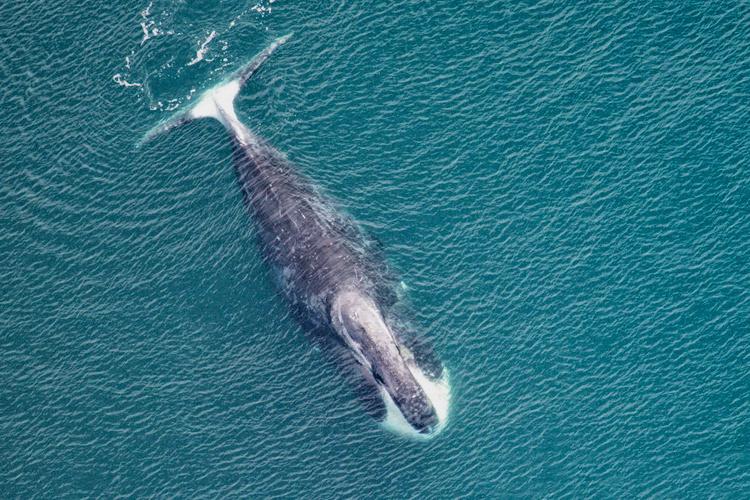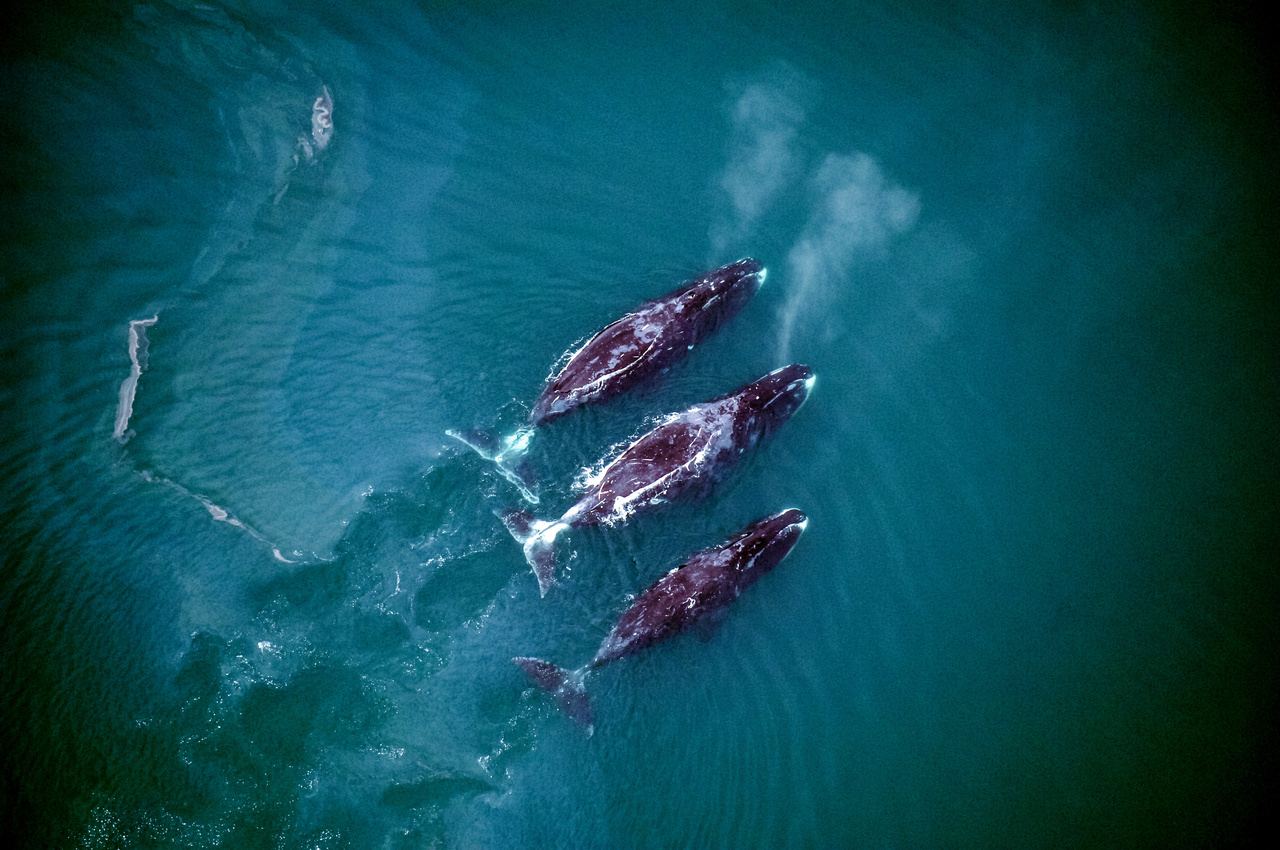We assess the status of endangered bowhead whales in Alaskan waters and study how they are affected by environmental changes and human activities. Our research fulfills requirements of the Endangered Species Act and the Marine Mammal Protection Act.
Stock Assessments
Resource managers need to know how many whales there are, where they are, and how their populations are changing. Our scientists collect this information using passive acoustic recordings, ice-based visual surveys, and aerial surveys, and present it in annual stock assessment reports.
Aerial Surveys of Arctic Marine Mammals
The Aerial Surveys of Arctic Marine Mammals (ASAMM) project documents the distribution, abundance, and behavior of bowhead whales and other marine mammals in areas of potential oil and natural gas exploration and development in the Alaskan Arctic. We work with other institutions to observe trends in sea ice cover within bowhead whale habitats. ASAMM seeks to provide near real-time data and maps on marine mammals to marine resource managers, research collaborators, and the public.
Passive Acoustics
The Arctic Long-Term Integrated Mooring Array (ALTIMA), supported by several collaborative projects with other agencies, has been collecting acoustic recordings in conjunction with oceanographic and prey measurements from the Beaufort, Chukchi, and Bering Seas since 2007. Analyses of these data are ongoing and are used to investigate how bowhead whales are affected by environmental changes, especially around areas impacted by humans (from oil and gas exploration, vessels, and fishing activities). Passive acoustic moorings provide previously unattainable year-round assessments of the seasonal occurrence of bowhead whales in the Alaskan Arctic and their response to changes in oceanographic conditions, climate, prey abundance, and human activities.
All photos were taken under research permit.



